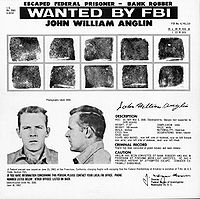
Photo from wikipedia
until relatively recently. I have dabbled and doodled for most of my life, but I’m not a great artist. More important, I thought, why would I—a scientist—spend time making art?… Click to show full abstract
until relatively recently. I have dabbled and doodled for most of my life, but I’m not a great artist. More important, I thought, why would I—a scientist—spend time making art? Then, about 5 years ago, a co-worker made an analogy that struck me so visually that I felt compelled to sketch it. I posted the resulting cartoon online—I had recently started blogging about science— and the positive response from my small following kindled a creative spark. Before long, another metaphor that begged for visual representation came to me. So I drew another comic. What started so casually has since evolved into a regular activity. My web comic now has several thousand followers, and I’ve become comfortable with the deficiencies in my artistic abilities. Yet, until recently, for the most part I looked at my cartooning as frivolous and fun—an activity separate from my science. I’m now recognizing that it’s more than that. On a personal level, it has become a form of therapy as I express, in a humorous way, my frustrations with academic life and the business of science. My comics also help me engage with the broad scientific community. My daytime work may only interest a small group of people, but in my comics, I can address topics that are important to all researchers, including publishing and peer review, time management, and the process of doing science. Connecting with others about these issues helps give purpose to my drawing and motivates me to continue. It also helps me get over my ambivalence about my work “on the side” garnering more attention than my science. That change came to a head after I created that poster, which was about teaching researchers how to deal with big data. As soon as it went up at that recent conference, I was reminded of the power of the comic medium. People would walk by, turn their heads, and then walk over. A lot of people. In addition to discussing the poster’s topic, we talked about comic drawing, my science “day job,” and—on several occasions—why scientific posters are largely so dull and uninviting. These conversations convinced me that comics can play an important role in the active discourse and engagement that science requires, and they helped me put aside my qualms about being “that comic guy.” Since I tacked up that poster, I have been asked to provide illustrations for a book; invited to publish a comic in a scientific journal; and contacted by scientists and academics who want to use my comics in blog posts, publications, presentations, and newsletters. I’ve also begun to give cartooning a more prominent role in communicating my research. When I featured my comics in a recent talk at an international meeting, I was gratified that they elicited laughter, questions, and follow-on discussions. By blending my two identities, I hope to be able to bring some of the outreach power of comics to my science, and some of the weight of my scientific work to my comics. I am a scientist who draws, I have decided, and I am at peace with my two selves. In the end, they are really just one: a scientist who is drawn—pun intended— to communicate. ■
Journal Title: Science
Year Published: 2017
Link to full text (if available)
Share on Social Media: Sign Up to like & get
recommendations!